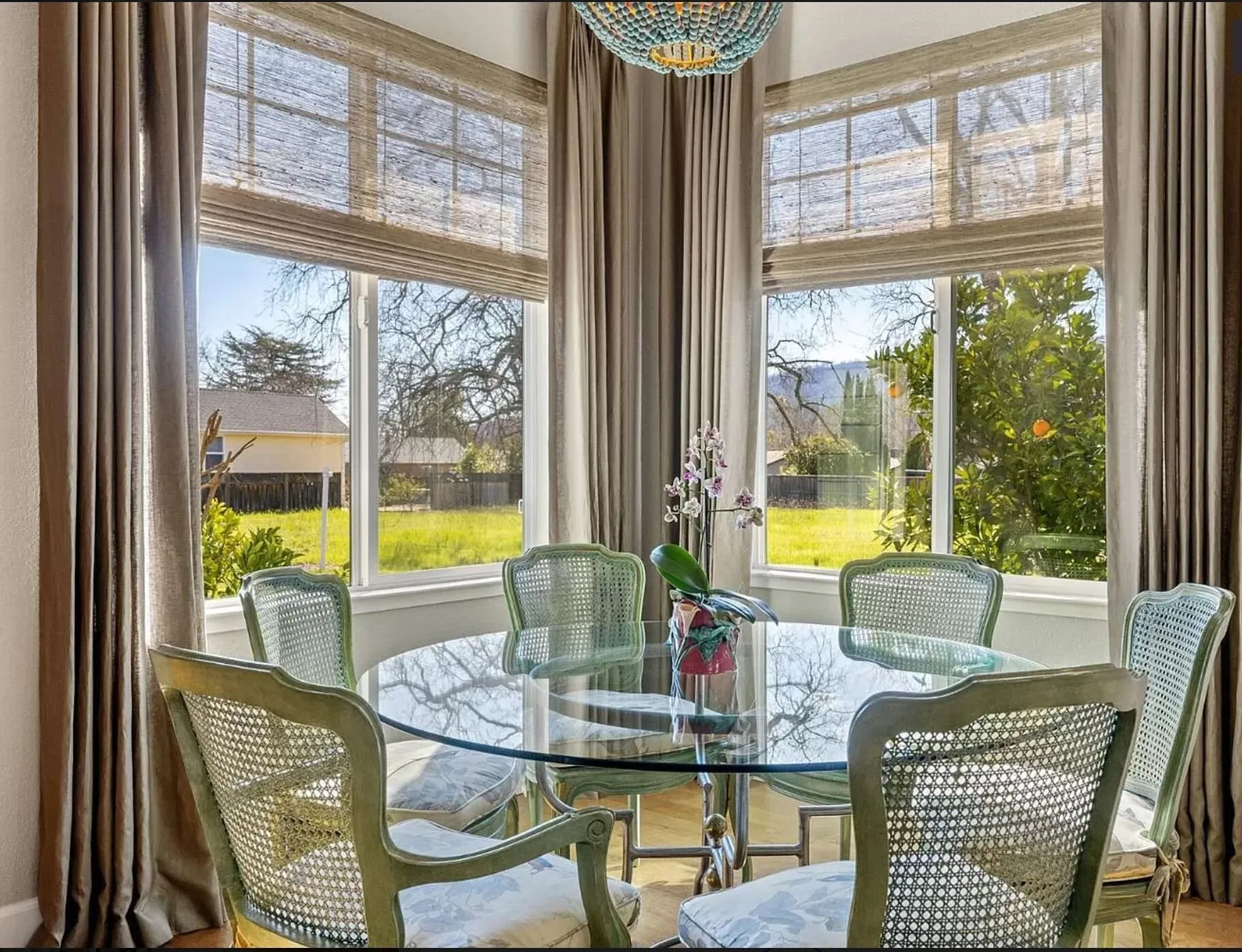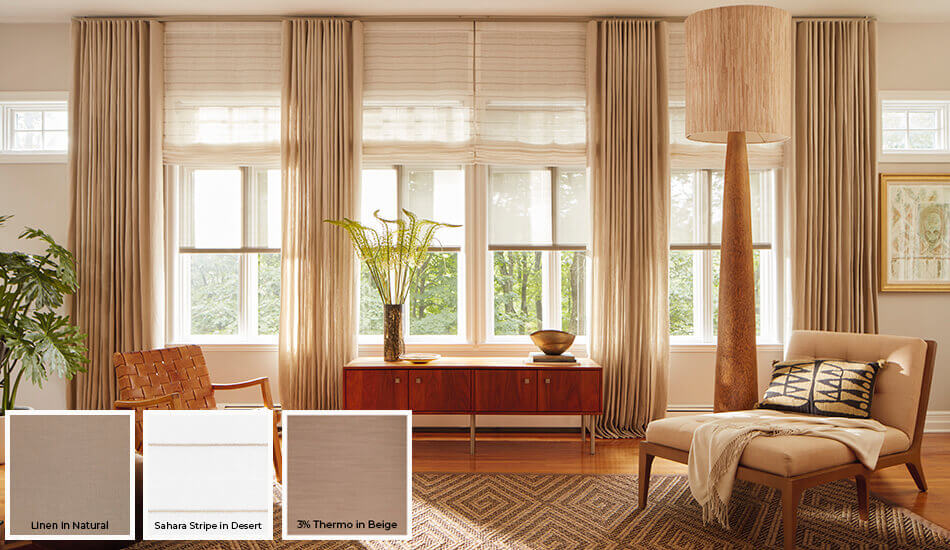The Ultimate Guide to Blinds: Types, Benefits, and Picking the Right Fit for You
The globe of window treatments is vast and varied. Blinds come in various styles, each offering distinctive advantages for various setups. Recognizing these alternatives is vital for making educated decisions. Furthermore, variables like material choice and room functionality play a substantial role. As one takes into consideration the excellent equilibrium between looks and practicality, the subtleties of measuring and preserving blinds likewise emerge as crucial elements. What should one focus on when picking the ideal window service?
Sorts of Blinds: A Comprehensive Review
Blinds work as both aesthetic and practical components in interior decoration, offering various choices to suit varied choices and demands. Among one of the most prominent types are Venetian blinds, defined by straight slats that can be readjusted for light control and personal privacy. Roller blinds, understood for their simpleness and versatility, been available in a series of materials and patterns, making them appropriate for modern and traditional setups. Vertical blinds, normally made use of for bigger windows or sliding doors, permit very easy modification and are often made from fabric or plastic.
Roman blinds, with their elegant folds up, add a touch of elegance to any room, while cellular tones give insulation and energy performance. In addition, bamboo blinds use a natural, environmentally friendly choice, instilling rooms with warmth. Each type has special features and styles, ensuring homeowners can discover the best suitable for their certain design and useful requirements.
Benefits of Putting Up Blinds in Your Home
The installation of blinds in a home uses a number of substantial benefits. They give enhanced privacy control, allowing property owners to manage exposure from the exterior. In addition, blinds contribute to energy effectiveness by assisting to take care of indoor temperatures, lowering the dependence on home heating and cooling down systems.
Boosted Personal Privacy Control
Installing blinds uses a significant benefit in privacy control when homeowners seek to enhance their living spaces. Blinds give a versatile remedy for managing exposure from both the exterior and interior of the home. By adjusting the slats or increasing the blinds, individuals can easily take care of the amount of light going into while simultaneously obstructing the view from outdoors. This adaptability enables property owners to produce a comfortable atmosphere without sacrificing all-natural light. In addition, different styles and materials are available, guaranteeing that home owners can pick options that effortlessly blend with their decor while boosting personal privacy. Inevitably, the setup of blinds functions as a reliable means to protect individual area, urging relaxation and satisfaction within the home environment.
Power Performance Renovation
Installing blinds not just enhances personal privacy however likewise substantially adds to energy efficiency in the home. By regulating all-natural light and decreasing heat transfer, blinds can help maintain a consistent indoor temperature. Throughout warmer months, closing blinds can shut out extreme sunlight, thereby decreasing the dependence on a/c. Conversely, in cooler months, they can give insulation by trapping heat, decreasing heating prices. Additionally, energy-efficient blinds, such as cellular shades, are made specifically to reduce energy loss. By purchasing top quality blinds, homeowners can create a more comfy living atmosphere while likewise decreasing energy expenses. Eventually, the setup of blinds acts as a practical solution for those seeking to boost both convenience and energy performance in their homes.
Exactly how to Choose the Right Blinds for each and every Space
Just how can one establish the most suitable blinds for each and every room in a home? The option process starts with assessing the area's function and setting. For circumstances, in living locations, flexible blinds that allow light control while making sure privacy are perfect. In bed rooms, power outage blinds can enhance rest quality by shutting out external light.
Bathrooms and kitchen areas call for moisture-resistant alternatives to endure humidity, making plastic or artificial wood blinds appropriate choices. In addition, the preferred aesthetic plays an important duty; collaborating blinds with the room's design improves the overall atmosphere.
Take into consideration the quantity of all-natural light each space gets; lighter blinds may be more effective for dark areas, while darker alternatives can include warmth to sunlit areas. Ultimately, comprehending details demands and choices for capability and design will lead home owners in making notified choices customized to every room's unique requirements.
Material Options: Wood, Plastic, Textile, and A lot more

Wood Blinds Benefits
Wood blinds are a popular choice among property owners seeking a blend of visual appeals and functionality. One considerable benefit of wood blinds is their natural beauty, providing a warm and welcoming look that improves any kind of interior decor. They are available in numerous surfaces and colors, permitting personalization to match personal design. In addition, timber blinds give exceptional light control and personal privacy, as their slats can be easily adapted to filter sunshine while keeping seclusion. Their longevity is an additional benefit; with proper treatment, wood blinds can last for several years without losing their charm (Phoenix curtains). Furthermore, they have protecting residential or commercial properties, aiding to manage interior temperatures and possibly reducing power costs. On the whole, timber blinds combine sophistication and usefulness, making them an excellent option for many homes
Plastic Resilience Features
Vinyl blinds stand apart for their remarkable toughness, making them a useful choice for numerous environments. These blinds are resistant to moisture, making them ideal for areas such as bathrooms and kitchens where moisture can be a concern. Unlike wood, vinyl does not warp, split, or discolor under sunshine, ensuring durable efficiency and marginal maintenance. In addition, they are available in a variety of shades and styles, allowing house owners to tailor their appearance without sacrificing toughness. Plastic blinds are also easy to tidy; a straightforward wipe with a moist towel is usually sufficient to maintain them looking fresh. On the whole, their resilience and low upkeep make plastic a popular option among homeowners looking for both capability and aesthetic appeal.

Fabric Choices Summary
Blinds are available in a range of fabric choices that provide to different aesthetic and functional requirements. Common materials consist of wood, plastic, and fabric, each offering one-of-a-kind benefits. Wood blinds provide a traditional, cozy aesthetic and exceptional insulation yet call for maintenance to avoid warping. Vinyl blinds are moisture-resistant and long lasting, making them perfect for high-humidity areas like cooking areas and restrooms. Textile blinds, offered in various shades and patterns, offer flexibility and gentleness, enhancing home style while offering varying degrees of light filtration. Furthermore, alternatives like artificial timber use the appearance of all-natural wood with included sturdiness. When selecting blinds, it is crucial to assess the certain requirements of each area to guarantee peak performance and design.
Gauging and Setting Up Blinds: Tips for Success
Although measuring and mounting blinds may seem simple, careful focus to detail is necessary for achieving an excellent fit. Initially, it is vital to determine the home window structure properly, keeping in mind both the size and elevation. For inside installs, deduct a percentage from the width to guarantee a tidy fit, while outside mounts must expand past the structure for better light control and aesthetic appeals. Using a steel measuring tape is recommended for accuracy.
When setting up, collect all necessary devices, such as a level, drill, and screws. Complying with the supplier's guidelines is critical to guarantee appropriate installment. It is advisable to pre-drill holes to stop harming the brackets. Furthermore, having a second person can make the procedure smoother, especially when lifting much heavier blinds. Lastly, after setup, examination the callous verify they operate smoothly and adjust as needed for maximum performance.
Maintenance and Look After Long-Lasting Blinds
Appropriate upkeep and treatment can significantly expand the life-span of home window coverings. Normal cleaning is necessary; utilizing a soft towel or a microfiber duster can effectively remove dust without scraping surface areas. For much deeper cleansing, a gentle option of soap and water is suggested, used Your Domain Name with a soft sponge, guaranteeing that no dampness permeates right into the mechanisms.
For textile blinds, area cleansing is suggested, while wood blinds need to be treated with a wood-safe cleaner to keep their surface. Avoid subjecting blinds to excessive dampness, warm, or straight sunshine, which can cause bending or fading.
In addition, regular evaluation of cables and mechanisms can prevent damage. It's sensible to follow maker standards for particular materials, as various blinds might have special treatment requirements. By taking on these straightforward maintenance practices, homeowners can assure their blinds remain practical and visually pleasing for years to find.
Often Asked Questions
Can Blinds Assist Reduce Energy Costs in My Home?
Blinds can efficiently minimize energy prices in a home by providing insulation, obstructing heat during summertime, and maintaining heat in winter months. Their ability to control light and air flow improves power effectiveness throughout the year.
Are There Child-Safe Options for Blinds?
Yes, there are child-safe alternatives for blinds. These consist of cordless designs, retractable cords, and safety devices that remove dangling cables, making certain a protected environment for kids while preserving capability and aesthetic charm in homes.
:strip_icc()/bedroom-window-treatments-7bc0535f-28f5d4c593f841e0a5ea0c09c7bd634a.jpg)
Exactly How Do Blinds Contrast to Drapes or Tones?
Blinds typically provide more accurate light control and room efficiency than shades or drapes. Phoenix plantation shutters. They are frequently less complicated to keep and cleanse, while curtains provide a softer aesthetic, and tones can provide differing insulation benefits
Can I Tailor the Design And Color of My Blinds?
Yes, blinds can be personalized in both shade and style. Various informative post manufacturers provide a variety of choices, allowing customers to choose materials, patterns, and hues that match their individual visual and home decoration.
What Is the Typical Life-span of Different Types of Blinds?
The ordinary lifespan of blinds varies: timber blinds last 5-10 years, synthetic timber 7-10 years, aluminum 5-10 years, and material tones around 5 years, depending on usage, direct exposure, and maintenance to sunlight.
Kitchen areas and washrooms need moisture-resistant alternatives to hold up against humidity, making vinyl or synthetic timber blinds appropriate selections. Timber blinds use all-natural charm and heat, while plastic gives resilience and convenience of maintenance. One significant advantage of timber blinds is their all-natural charm, offering a warm and welcoming appearance that boosts any indoor decoration. In addition, wood blinds give excellent light control and personal privacy, as their slats can be conveniently readjusted to filter sunshine while keeping privacy. For textile blinds, place cleaning is recommended, while wooden blinds ought to be treated with a wood-safe cleaner to keep their finish.